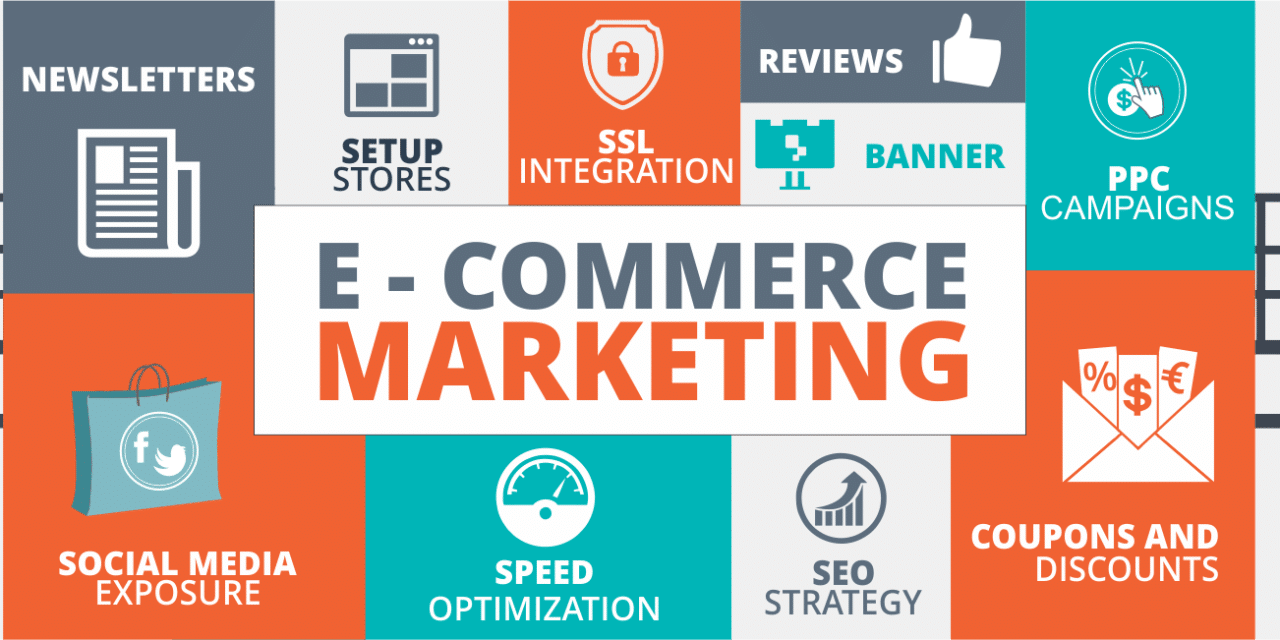 In today’s digital landscape, the realm of commerce has undergone a significant transformation. E-commerce, or online selling, has emerged as a dominant force, reshaping consumer behavior and business strategies alike. However, the success of e-commerce is not solely contingent on setting up an online store. To thrive in this competitive environment, effective marketing and advertising strategies are indispensable. In this article, we delve into the vital role that marketing and advertising play in the e-commerce realm, supported by facts and statistics that highlight the impact of these strategies on businesses. The crucial role of marketing and advertising cannot be ignored.
In today’s digital landscape, the realm of commerce has undergone a significant transformation. E-commerce, or online selling, has emerged as a dominant force, reshaping consumer behavior and business strategies alike. However, the success of e-commerce is not solely contingent on setting up an online store. To thrive in this competitive environment, effective marketing and advertising strategies are indispensable. In this article, we delve into the vital role that marketing and advertising play in the e-commerce realm, supported by facts and statistics that highlight the impact of these strategies on businesses. The crucial role of marketing and advertising cannot be ignored.
The E-commerce Boom and Online Competition
The growth of e-commerce has been nothing short of remarkable. Global e-commerce sales are projected to reach a substantial amount by the coming years. This surge in online shopping is attributed to factors like convenience, wider product selection, and the rise of mobile shopping. However, the increase in e-commerce activity also brings heightened competition. In this crowded digital marketplace, businesses must actively differentiate themselves to stand out and attract customers.
The Link Between Marketing and E-commerce Success
Marketing and advertising are the driving forces behind a successful e-commerce venture. Consider the example of Amazon, a global e-commerce giant. Its success is not just due to its vast product selection but also its relentless marketing efforts. Amazon invests heavily in targeted advertising, personalized recommendations, and convenient shopping experiences. The result? A staggering number of active customer accounts. This exemplifies how strategic marketing can elevate an e-commerce business to unprecedented heights.
Facts and Statistics: The Impact of Marketing
- Conversion Rates: The right marketing strategies can substantially boost conversion rates. A study found that customers referred by email tend to convert more frequently than other channels.
- Personalization: Personalized experiences drive engagement and conversions. Research revealed that a significant percentage of consumers are more likely to make a purchase when brands offer personalized experiences.
- Social Media: Social media platforms have become powerful marketing tools. A substantial number of users research products on social media, and a significant percentage are more likely to buy from brands they follow online.
The Perils of Inadequate Marketing and Advertising
While effective marketing can propel e-commerce businesses to success, the lack thereof can lead to stagnation or worse – business failure. Ignoring the crucial role of marketing is not wise. Consider the cautionary tale of former retail giant Toys “R” Us. The company’s failure to adapt its marketing strategies to the digital age contributed to its downfall. Its outdated approach left it unable to compete with online retailers, eventually leading to bankruptcy and store closures.
Facts and Statistics: The Consequences of Inadequate Marketing
- Visibility and Brand Recognition: A lack of marketing diminishes a brand’s online visibility. Websites on the first page of search results garner the majority of traffic. Brands that fail to invest in marketing struggle to achieve such visibility.
- Competitive Edge: Competitors with robust marketing strategies gain a competitive edge. A significant percentage of marketers believe that custom content is the future of marketing. Brands that don’t prioritize content creation risk being left behind.
- Consumer Trust: Effective marketing builds consumer trust. A survey revealed that a high percentage of consumers trust recommendations from friends and family, while a significant percentage trust online reviews. Brands without marketing strategies miss out on cultivating this trust.
The Power of Advertising in E-commerce
Advertising is an integral component of marketing, helping e-commerce businesses reach wider audiences and drive sales. Take the example of Shopify, a leading e-commerce platform. Its advertising campaigns leverage social media, influencer partnerships, and content marketing to promote its services. This has resulted in a large number of businesses using Shopify.
Facts and Statistics: The Influence of Advertising
- PPC Advertising: Pay-per-click (PPC) advertising drives results. A study found that businesses make an average of revenue for every spent on Google Ads.
- Video Advertising: Video ads capture attention. According to research, consumers say they’ve been convinced to buy a product or service by watching a brand’s video.
- Social Media Advertising: Social media ads generate engagement. A significant percentage of consumers want brands to share discounts and sales on social media.
The Imperative of Marketing and Advertising
In the dynamic world of e-commerce, marketing and advertising are not optional but essential. The success stories of industry giants like Amazon and Shopify underscore the impact of strategic marketing efforts. On the flip side, the failures of once-prominent businesses like Toys “R” Us serve as cautionary tales about the perils of neglecting these strategies. The statistics and facts presented here vividly demonstrate that e-commerce businesses without effective marketing and advertising initiatives risk obscurity, stagnation, and even closure. Embracing these strategies can empower businesses to thrive, reach broader audiences, and seize the vast opportunities that the e-commerce landscape offers. Do not ignore the crucial role of marketing and advertising. Retail marketing is investing into your business. Speak with an expert more about this topic.








